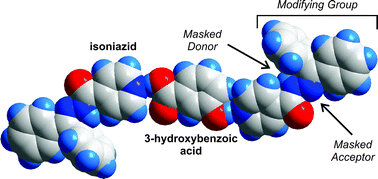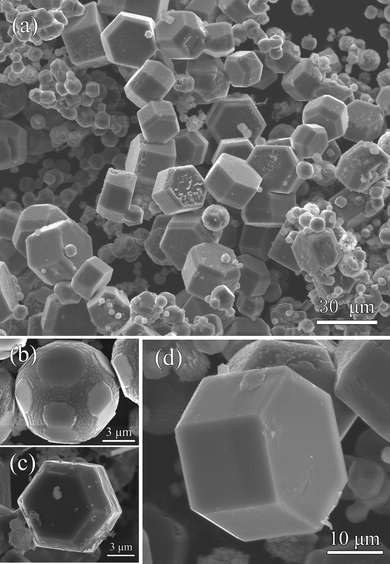 How does one control and modify the self-assembly process of organic molecules towards a desired solid state? Andreas Lemmerer, Joel Bernstein and Volker Kahlenberg ask themselves this very question in their recent CrystEngComm Hot Article. In their paper the group tell us how they modify the hydrogen bonding in isonicotinic acid hydrazide (isoniazid) in order to control the self-assembly process.
How does one control and modify the self-assembly process of organic molecules towards a desired solid state? Andreas Lemmerer, Joel Bernstein and Volker Kahlenberg ask themselves this very question in their recent CrystEngComm Hot Article. In their paper the group tell us how they modify the hydrogen bonding in isonicotinic acid hydrazide (isoniazid) in order to control the self-assembly process.
Isoniazid is an active pharmaceutical ingredient that helped cure tuberculosis as part of a triple therapy cocktail. It co-crystallizes with carboxylic acids to form pharmaceutical co-crystals and is also a versatile supramolecular reagent as it has multiple donor and accepting groups to interact with different functional groups. Find out more about this study and Isoniazid in the article – FREE to read until 31 May 2011.
Covalent assistance in supramolecular synthesis: in situ modification and masking of the hydrogen bonding functionality of the supramolecular reagent isoniazid in co-crystals
Andreas Lemmerer, Joel Bernstein and Volker Kahlenberg
CrystEngComm, 2011, Advance Article DOI: 10.1039/C1CE05152K, Paper












 In this HOT article, scientists from Dublin, Ireland have directed their research towards integrating crystal structure analyses with computational (ab initio) modelling methods and exploring the influence and positional influence of different functional groups e.g. N/F/Cl/Br/I atoms, Me/OMe in semi-rigid drug-like molecules on inter- and intramolecular interactions, conformations and solid-state packing.
In this HOT article, scientists from Dublin, Ireland have directed their research towards integrating crystal structure analyses with computational (ab initio) modelling methods and exploring the influence and positional influence of different functional groups e.g. N/F/Cl/Br/I atoms, Me/OMe in semi-rigid drug-like molecules on inter- and intramolecular interactions, conformations and solid-state packing. anage to keep the growth temperature quite low while still obtaining high quality films, which will be particularly useful for device fabrication.
anage to keep the growth temperature quite low while still obtaining high quality films, which will be particularly useful for device fabrication.


 composed of nanoparticles) composed of nanoparticles under hydrothermal conditions. Ethylene glycol was used as the solvent which can decrease the reaction rate by forming ligand bonds with lanthanide ions and further control the final morphology of the product. Eu3+ ion was chosen as a structural information probe to obtain more luminescent and phase structure information.
composed of nanoparticles) composed of nanoparticles under hydrothermal conditions. Ethylene glycol was used as the solvent which can decrease the reaction rate by forming ligand bonds with lanthanide ions and further control the final morphology of the product. Eu3+ ion was chosen as a structural information probe to obtain more luminescent and phase structure information. In this HOT article, Kitagawa and co-workers describe two isomorphic frameworks, [Zn(thdc)(dpNDI)]n, based on 2,5-thiophenedicarboxylate (thdc) as the topology-directing ligand, assembled from zinc ions and N,N‘-di(4-pyridyl)-1,4,5,8-naphthalenediimide (dpNDI) as the electron-accepting ligand. The unique connecting angle of thdc promotes the formation of either a 3D pillared-layer framework or an interdigitated 2D layer framework, which are originally synthesized with terephthalic acid or isophthalic acid, respectively. In addition, these isomers show different charge-transfer interactions with electron-donating aromatic molecules because of their intrinsic porous structure determined by their topology. Such a topological design of PCPs can be used in guest-selective sensor materials.
In this HOT article, Kitagawa and co-workers describe two isomorphic frameworks, [Zn(thdc)(dpNDI)]n, based on 2,5-thiophenedicarboxylate (thdc) as the topology-directing ligand, assembled from zinc ions and N,N‘-di(4-pyridyl)-1,4,5,8-naphthalenediimide (dpNDI) as the electron-accepting ligand. The unique connecting angle of thdc promotes the formation of either a 3D pillared-layer framework or an interdigitated 2D layer framework, which are originally synthesized with terephthalic acid or isophthalic acid, respectively. In addition, these isomers show different charge-transfer interactions with electron-donating aromatic molecules because of their intrinsic porous structure determined by their topology. Such a topological design of PCPs can be used in guest-selective sensor materials.